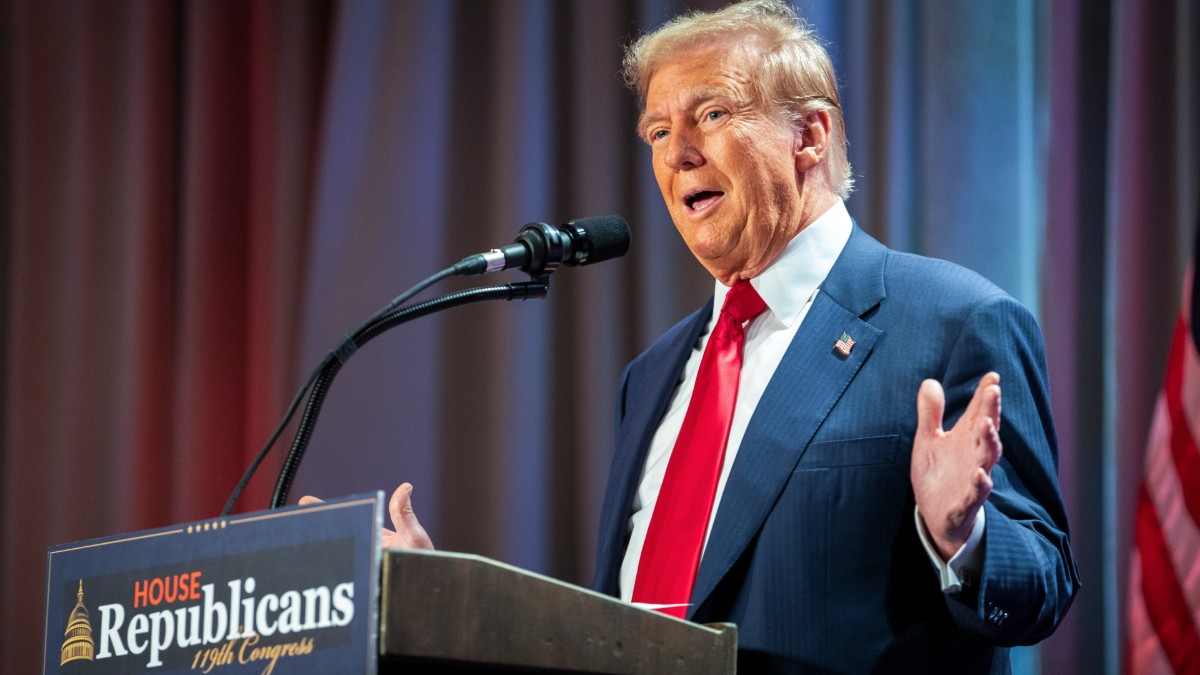‘ALL products coming into the United States’: Trump promises disastrous tariffs on international imports right away

President-elect Donald Trump’s long-promised economic proposal threatens to further hamstring already struggling American consumers, specifically his voters, and punish them exactly where they hoped his presidency would help—their wallets.
Trump announced sweeping 25% tariffs on all Canadian and Mexican imports, plus an additional 10% on Chinese goods, starting January 20th—day one of his presidency. News of the dramatic move sent immediate shockwaves through currency markets, with the Canadian dollar dropping 1.2% and the Mexican peso falling 2% on the news. For voters who backed Trump hoping to ease inflation’s squeeze on household budgets, these tariffs promise the opposite effect, which was explained before the election but fell on deaf ears. The Peterson Institute estimates they could cost American families over $2,600 annually in higher prices for everyday goods.
The scope proves particularly troubling given what Americans import from these countries. Mexico recently became America’s top source of automobiles and auto parts. Canada supplies critical oil, machinery, and raw materials. Rather than making these goods domestically, tariffs will simply make them more expensive for U.S. consumers.
Mexican President Claudia Sheinbaum directly warned the measures would spark retaliatory tariffs, creating an escalating cycle of cost increases that puts shared business interests at risk. Even China’s typically reserved embassy spokesman declared, “No one will win a trade war.”
Trump frames the tariffs as leverage against illegal immigration and drug trafficking, vowing they’ll remain until those issues are resolved—which means they are likely to stay for the foreseeable future. Given illegal immigration and drug trafficking are near-forever items on most countries’ dockets and the fact that tariffs will be challenging to remove once placed, it puts the American people in an impossible position. However, this connects complex social challenges to economic penalties that primarily impact working Americans – the same voters who supported Trump, believing he would lower their living costs.
The economic impacts could prove devastating for American manufacturing and agriculture. Many U.S. factories rely on parts and materials from Mexico and Canada, while American farmers depend heavily on export markets that would likely impose retaliatory tariffs. This creates a domino effect: higher input costs for businesses, reduced exports for producers, and ultimately higher prices for consumers.
The wealth of contradictions between Trump’s campaign promises and policies become clearer when scrutinizing specific sectors that directly affect the American people, including the people who voted for him and intrinsically asked for this. For example, auto manufacturers, who already face serious supply chain challenges, would see parts costs surge under the 25% tariff. Food prices, a significant concern for working families, would likely increase as agricultural trade gets disrupted. Even essential household items would cost more as retailers pass on higher import costs to consumers.
The irony emerges more fully in Trump’s base embracing tariffs without grasping their pocketbook impact—and sometimes, not even understanding what the word means. By redirecting working-class frustration toward foreign threats rather than massive domestic wealth concentration, Trump’s tariff gambit obscures the real drivers of economic inequality. Trump’s ultimate job is to shift his voter’s eyes away from the rumble of the wealthy’s existential hunger pangs for which their bodies are desired.
His Treasury pick, Scott Bessent, must now implement these contradictory promises—delivering tax cuts that expand deficits while imposing tariffs that function as a massive tax hike on consumers. For Americans already struggling with prices, it’s a recipe for even tighter household budgets ahead.
The message grows clearer: Trump’s economic nationalism serves better as campaign rhetoric than kitchen table relief. Working families who voted for lower prices may soon discover they’ve endorsed their own cost of living increase instead. While Trump claims to fight for American workers, his tariff policy threatens to deliver precisely what those workers voted against—higher prices, economic uncertainty, and an even greater squeeze on their household finances.
Have a tip we should know? tips@themarysue.com